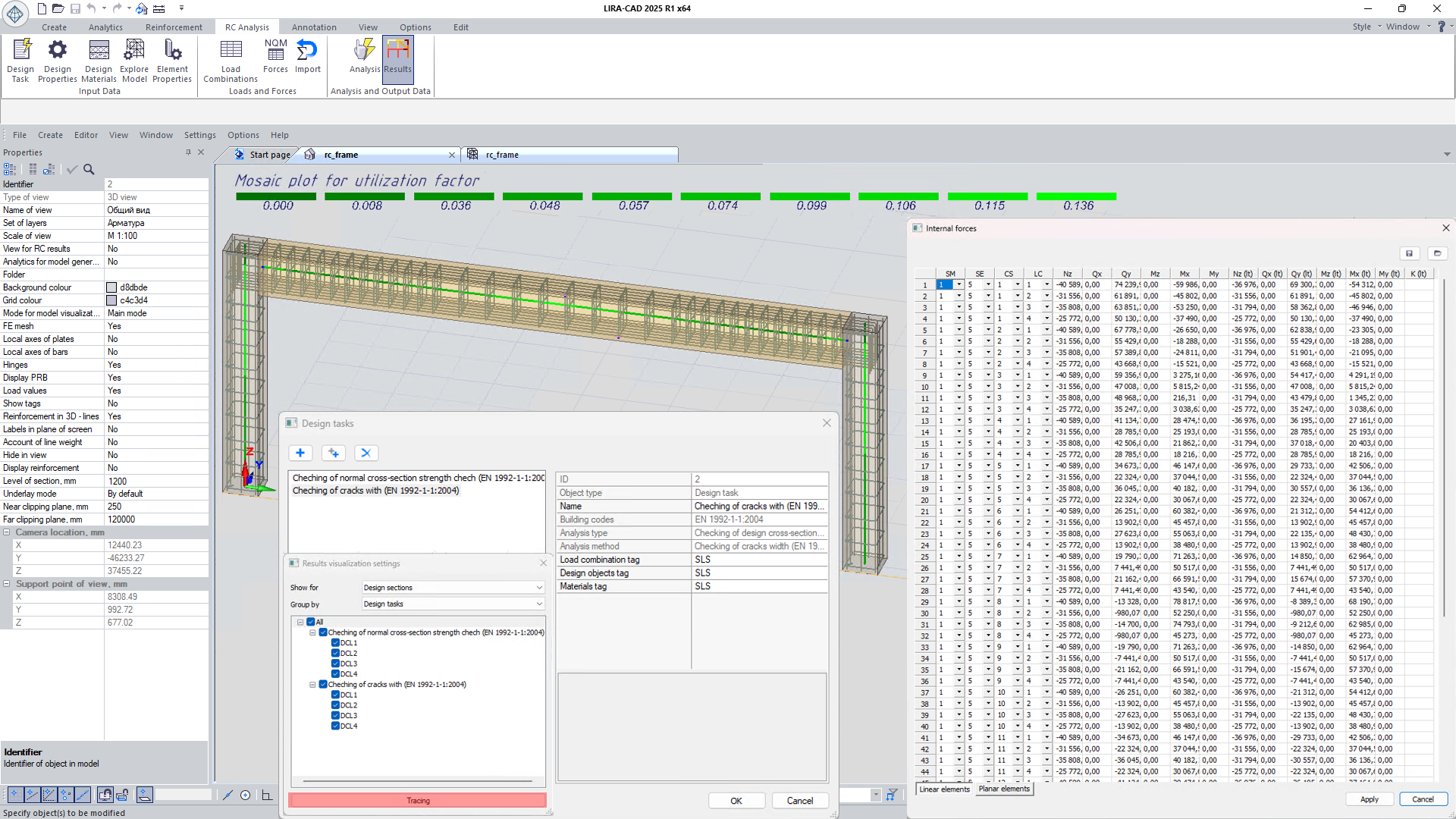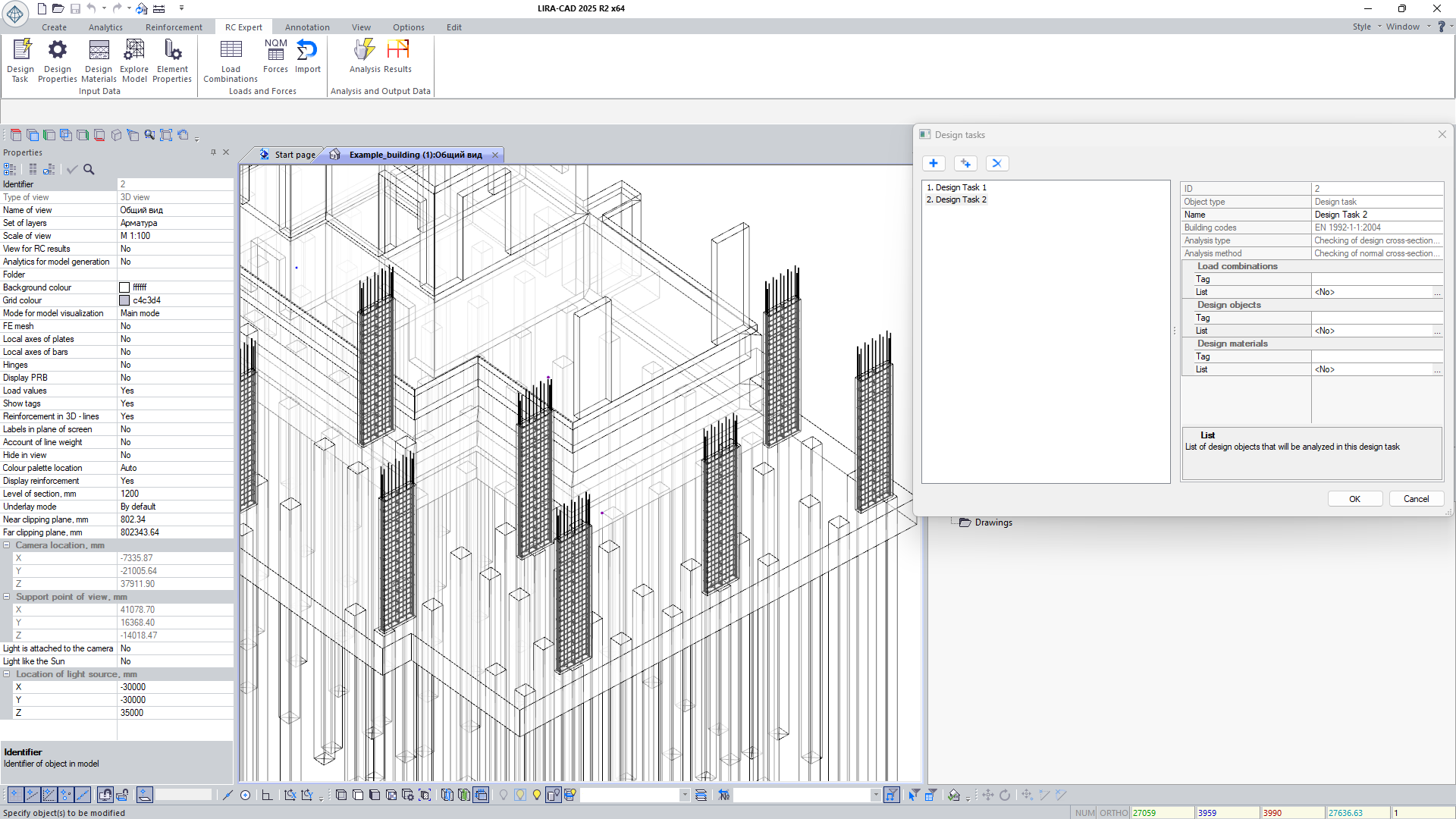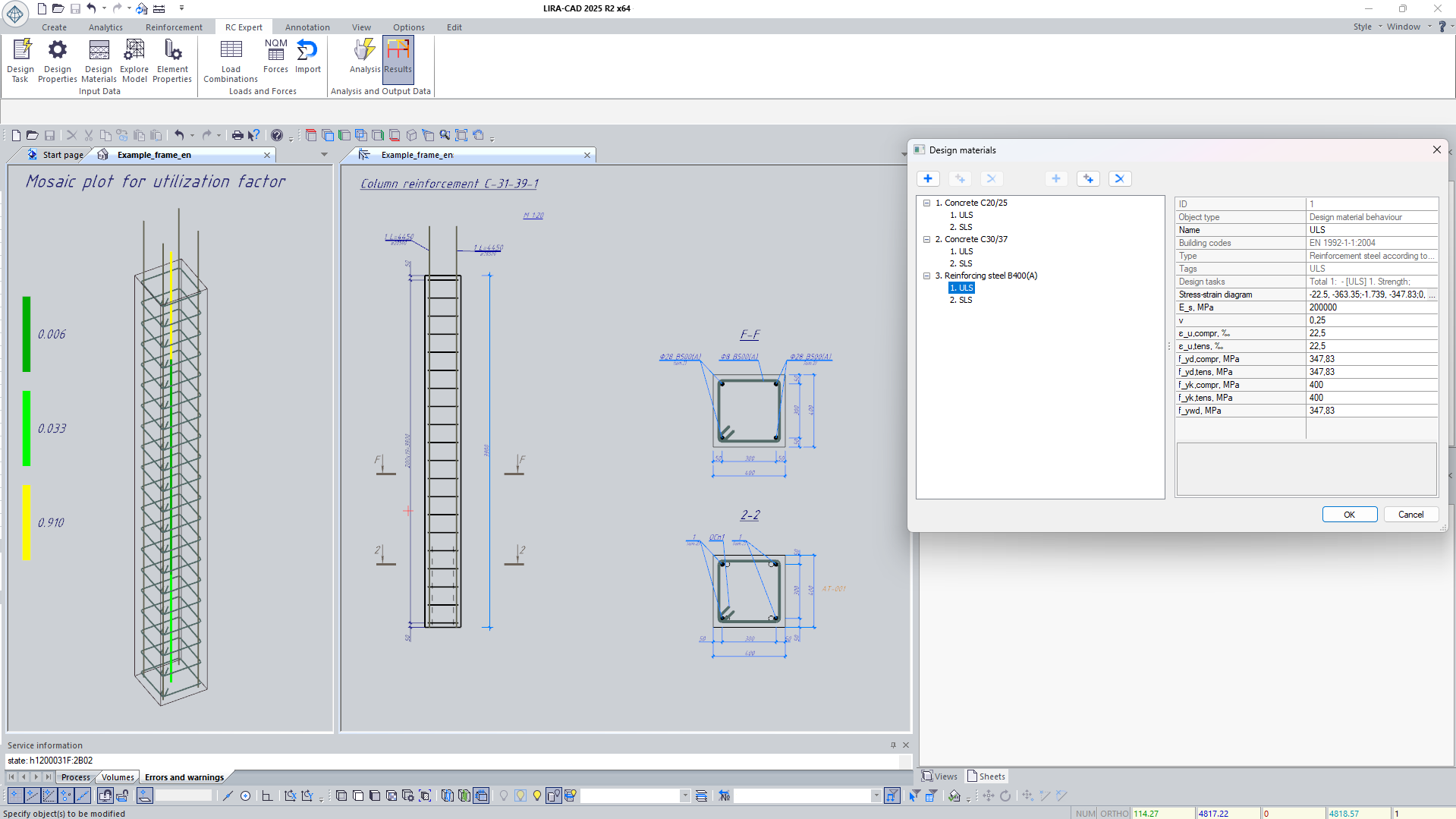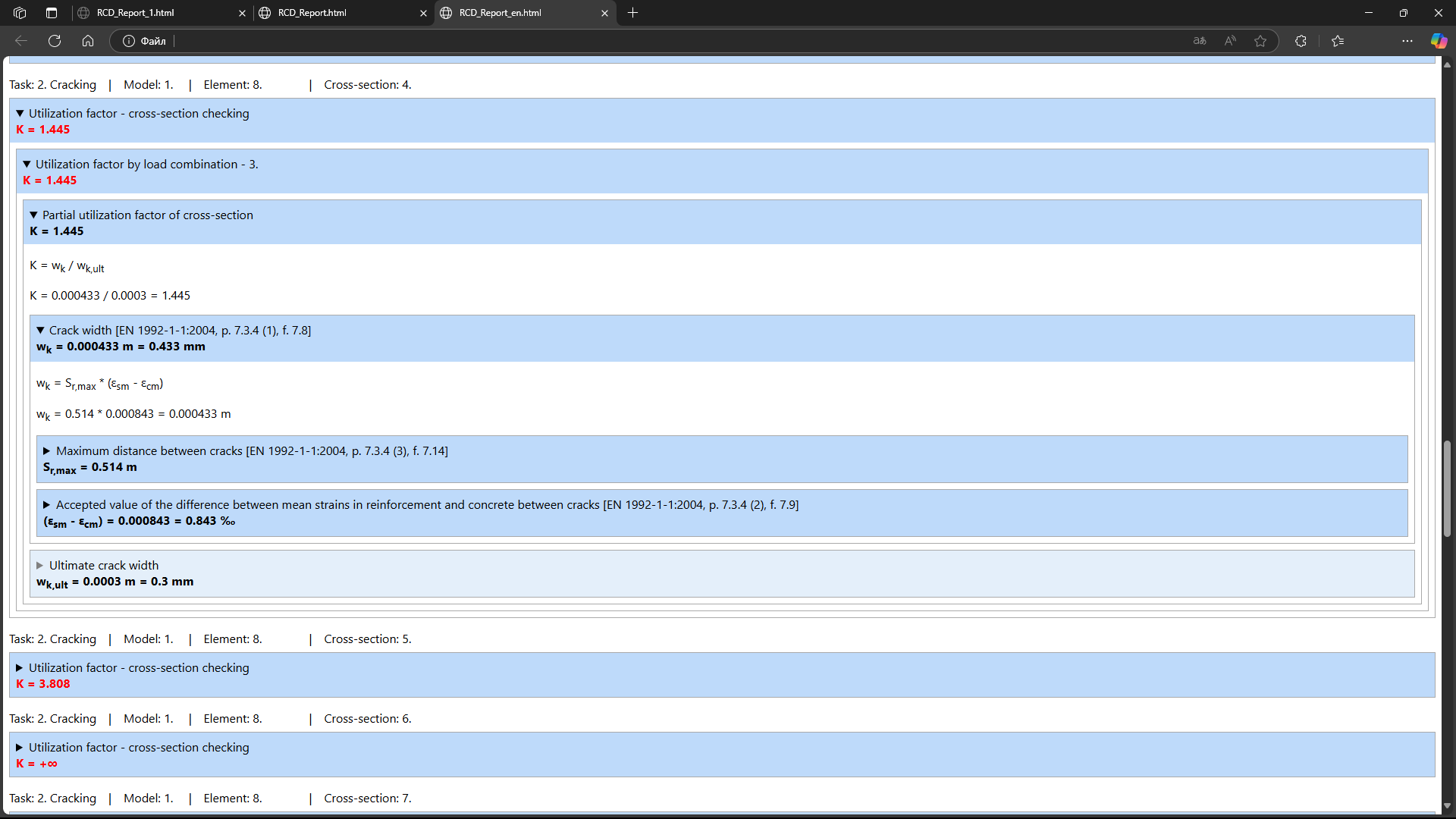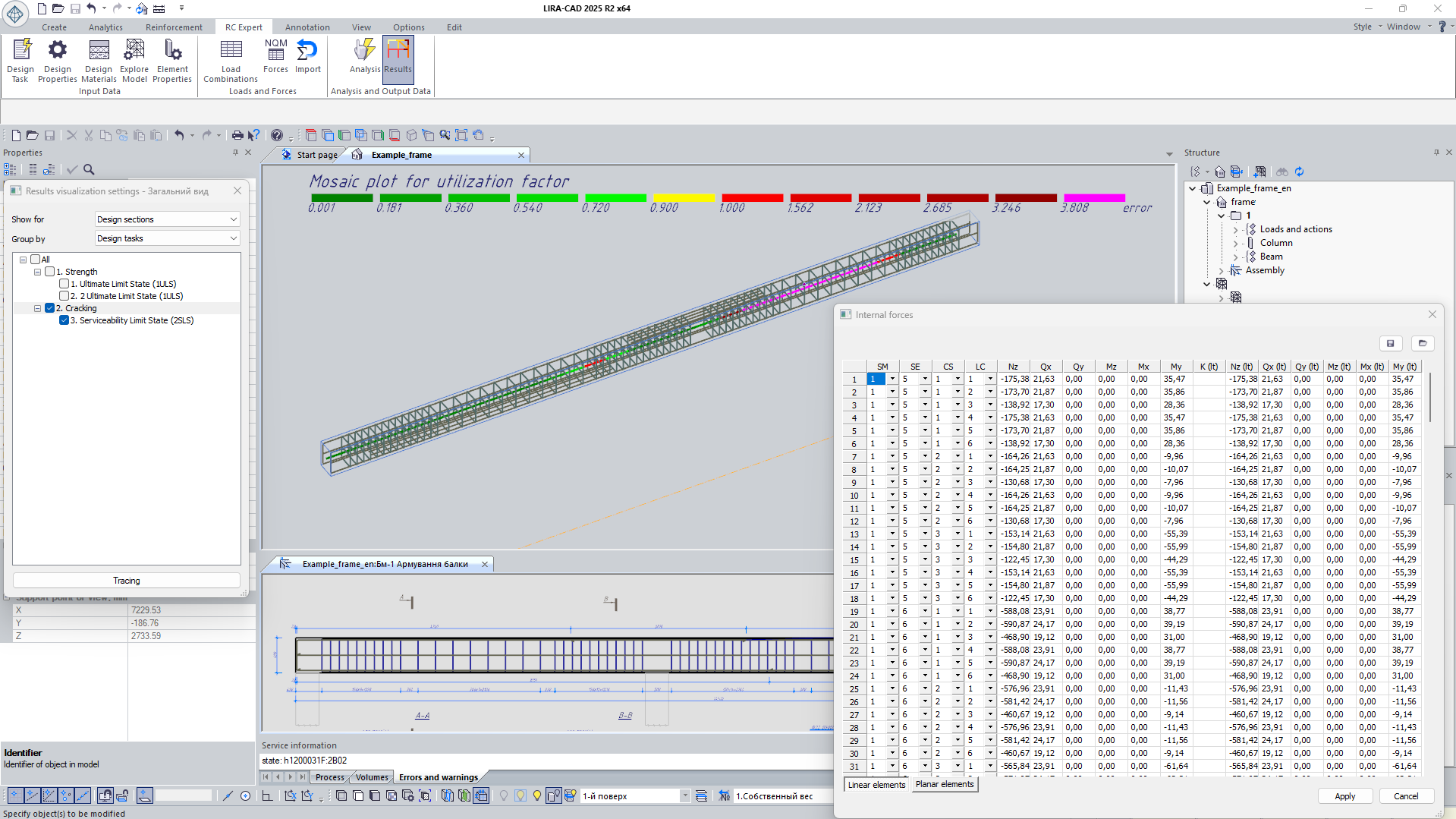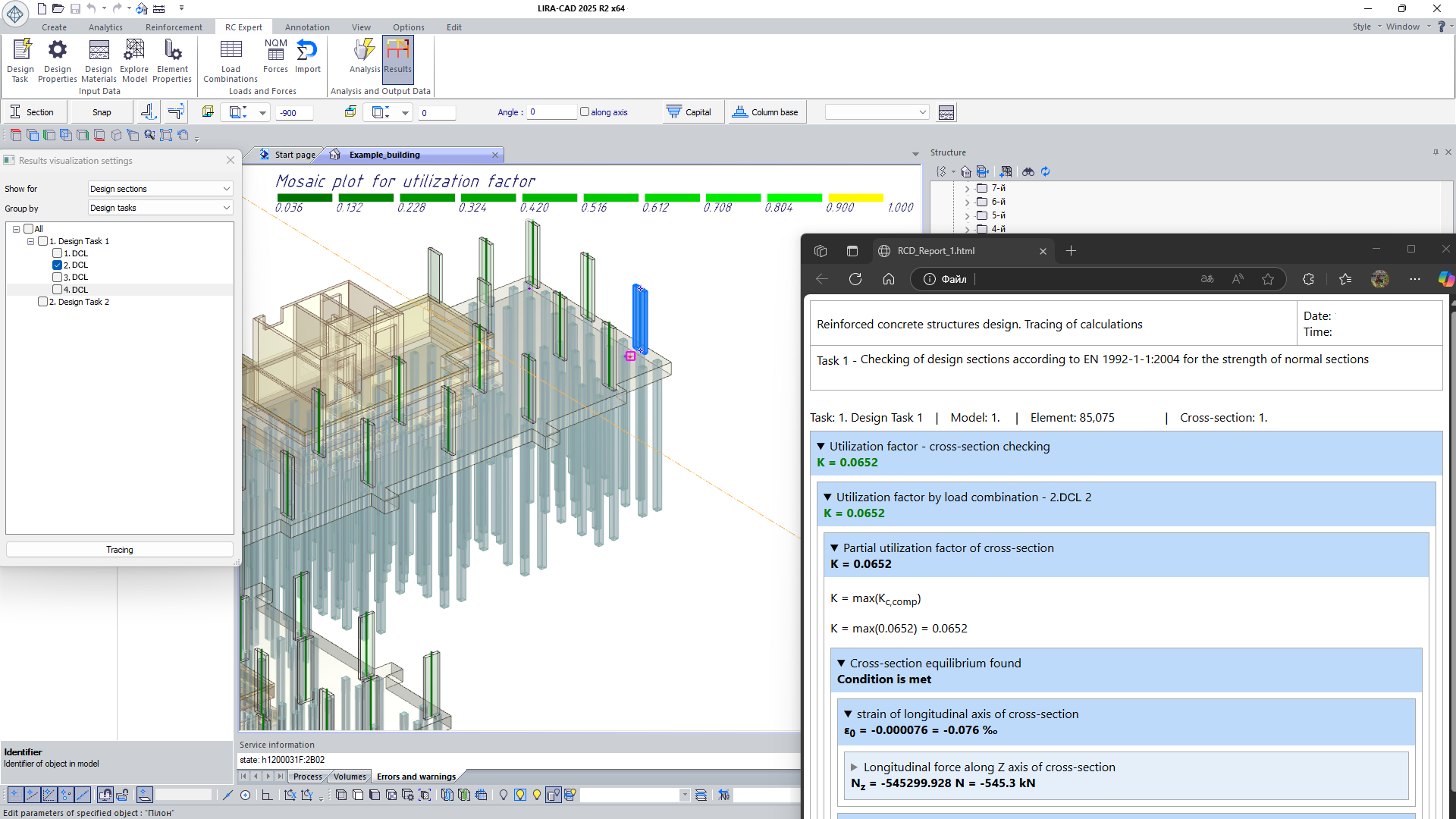RC Expert
The 'RC Expert' system is used to analyse reinforced concrete (RC) structures with arbitrary reinforcement patterns according to the DBN B.2.6-98:2009 and EN 1992-1-1:2004/A1:2014 building codes. Arbitrary reinforcement pattern implies not only that the reinforcement may be arranged arbitrarily in space, but also the user could assign different design parameters for certain reinforcement bars or groups of rebars.
The system gives the user the flexibility to modify the analysis process, choose the required checks, define their sequence, select appropriate force combinations for the checks, and modify the analysis parameters. The tracing routine option enables the user to evaluate each step of analysis, ensuring high transparency and reliability of the results.
RC Expert is a system in LIRA-FEM program. It is designed to check the reinforced concrete (RC) structures for strength, serviceability and structural requirements. The system offers additional (parallel to the already existing in LIRA-FEM program) technology for analysis of RC structures, focusing on the needs of a wide range of users: designers, experts, researchers.
This system is mentioned to provide a set of checks according to various building codes, where both the analysis algorithms and the input data can be flexibly customized; and more detailed information, including the tracing routines, can be obtained for the certain analysis results. In the first version of the system, structural elements with arbitrary reinforcement pattern and, in the future, with arbitrary cross-sections and/or with strengthening will be analysed. To capture more design situations not covered by the building standards, the analysis algorithms are highly generalised. If generalisation is not possible, the user will receive information on why the modelled structural solution does not fit into the zone of allowed situations according to certain building code.
Arbitrary reinforcement pattern implies that it can be arranged randomly in space, and the user could define various design parameters for individual reinforcement bars or groups of rebars. This will make it possible to analyse the structural elements with defects, corrosion of reinforcement, strengthening during reconstruction, composite reinforcement, etc.
The user could adjust the analysis procedure:
- to select the list and sequence of certain checks, to customize the check procedures, to consider optional items of the building codes;
- to select a list of elements to be checked and a set of valid force combinations for every check;
- to reassign design parameters and coefficients involved in the analysis with user-defined values to control the analysis procedure.
The required transparency of the analysis procedures for the user is ensured by detailed explanations of the methods and assumptions used in the analysis.
The tracing routine is used for a more thorough evaluation of the analysis results in a certain check for a particular combination of loads. By using the tree of intermediate values, the user can follow the steps taken to extract the intermediate values from the input data; the calculation formulas applied in the program code are displayed.
The file is interactive in contemporary browsers; click the line containing a value to reveal the line contents, which include a formula and a list of input values. And so forth, until the user reaches the desired value.
In LIRA-CAD 2025 R2 implements the strength checks of the bar structural element of rectangular and circular cross-section by the ultimate and serviceability limit states according to DBN B.2.6-98:2009 and EN 1992-1-1:2004/A1:2014, namely:
- check of the normal sections for in axial force and bending moments using a nonlinear deformation model;
- check of crack resistance in normal sections.
For the DBN V.2.6-98:2009 and EN 1992-1-1:2004/A1:2014 standards, a verification of wall and slab elements has been implemented based on the strength of normal cross-sections and crack resistance.
Checks for other internal force components, checks using the ultimate force approach.


